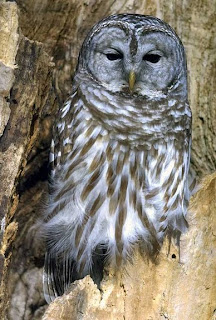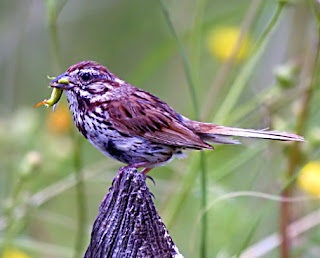Goals and Supplies
Birding's beauty is that it only takes a field guide and a pair of binoculars--WHICH IS ALL YOU NEED, AT LEAST 7x35, (but 8x or 10x are better; the second number is your field of vision, so a big number there is a good thing), walking shoes and old clothes. More on these subjects are covered in the concluding remarks section of this course. If you are interested, two exellent ornithology texts are Gill's Ornithology, published by Freeman and Welty's The Life of Birds. Current students have a rudimentary textbook embedded in their CD-ROM. Thayer's Birds of North America.
THE GOALS OF THIS COURSE ARE TWO FOLD:
1) to enhance your appreciation of birds.
2) to encourage you to make observations or investigations of your own.
My name is Dan Tallman. I am an ornithologist by training. I will try to keep unnecessary technical terms out of this course, which is often hard for someone who is completely immersed in his or her scientific field. But, hopefully, as a birder by hobby, I can also recognize for you which terms are important to include.
As a first assignment, study "topography of bird" and "parts of wing" in any text or field guide. How do bird arms and legs compare the human ones?
THE GOALS OF THIS COURSE ARE TWO FOLD:
1) to enhance your appreciation of birds.
2) to encourage you to make observations or investigations of your own.
My name is Dan Tallman. I am an ornithologist by training. I will try to keep unnecessary technical terms out of this course, which is often hard for someone who is completely immersed in his or her scientific field. But, hopefully, as a birder by hobby, I can also recognize for you which terms are important to include.
As a first assignment, study "topography of bird" and "parts of wing" in any text or field guide. How do bird arms and legs compare the human ones?



Robyn—sorry for the very late reply. There is no certification of completion for this course. If you want to arrange for a local university to accept this course, that would be fine. When I gave this course for credit, students kept weekly bird lists and took three exams. Since I do have a Ph.D., my credentials should be acceptable to most universities.
ReplyDeleteI have added a contact form to the course.
ReplyDelete